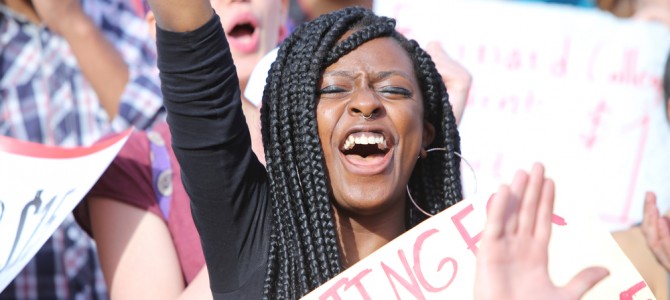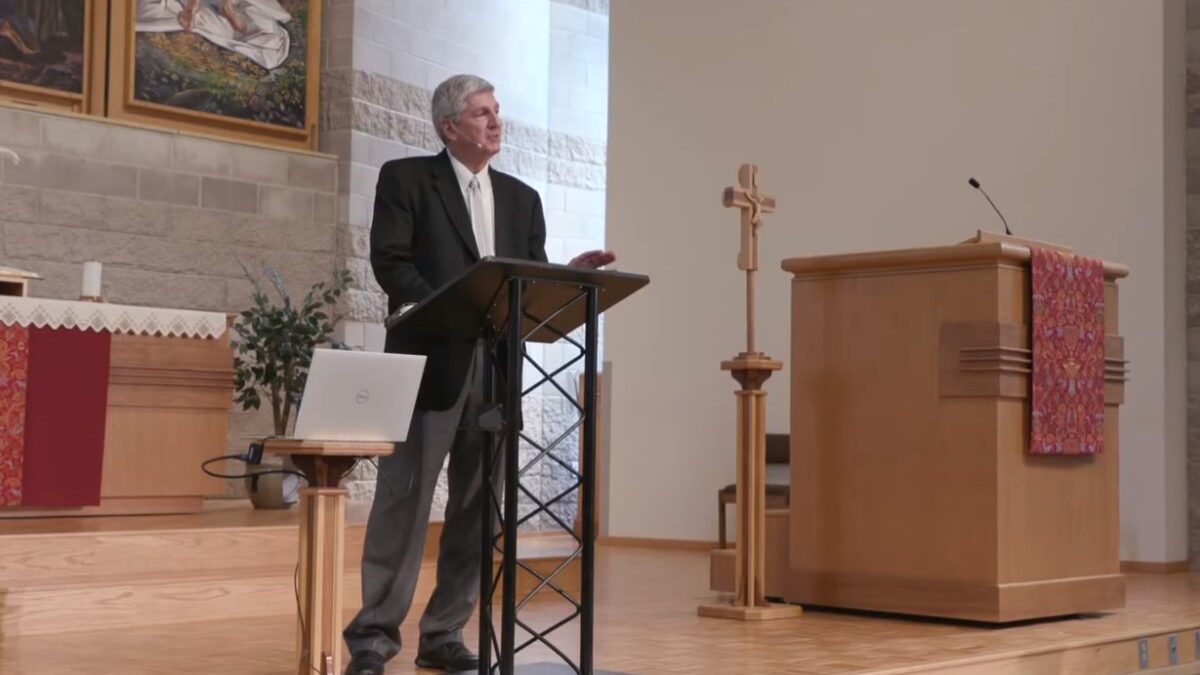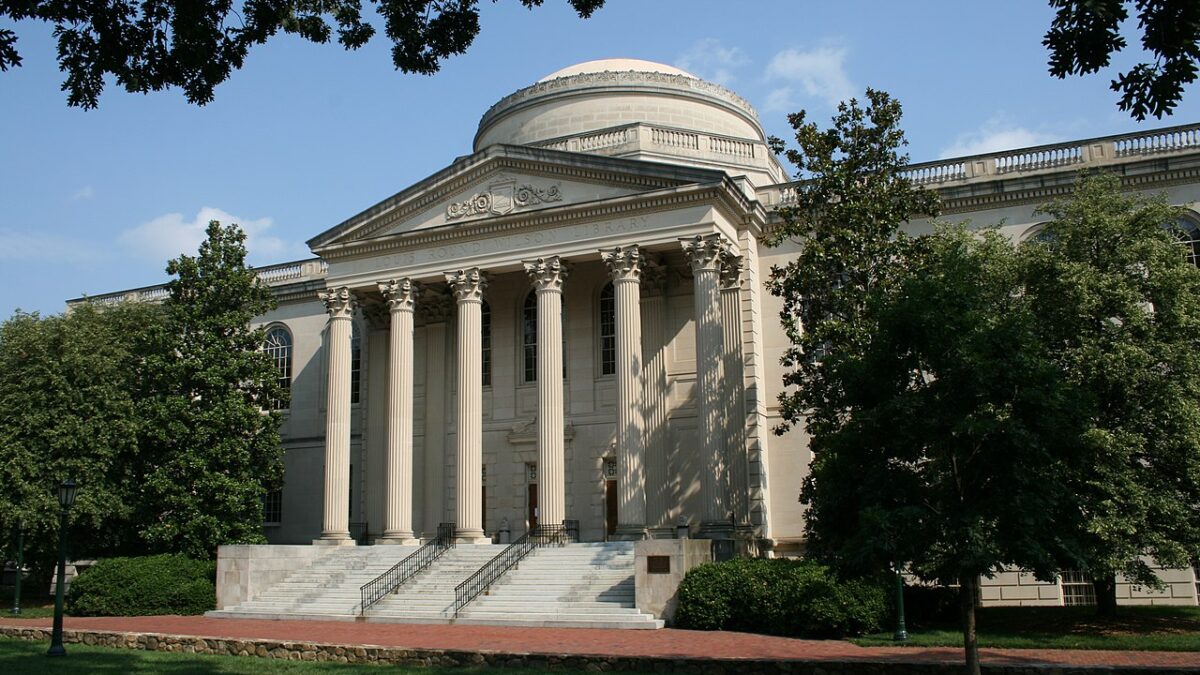
Donald Trump famously tweeted a question of whether campuses that don’t protect free speech should lose federal funding, after aggressive protesters prevented flamboyant conservative speaker (and Trump promoter) Milo Yiannopoulos from speaking at the University of California at Berkeley earlier this year.
Earlier this month, off-campus rioters used a peaceful protest by UC-Berkeley students to set fire to university property. The next day, a group of students and faculty at New York University protested another conservative speaker, Gavin McInnes. Last week the student government at Santa Clara University banned a local chapter of Turning Point USA, a group that advocates “fiscal responsibility, free markets, and limited government,” reportedly claiming that such beliefs and discussions were in themselves racist and made liberal students uncomfortable.
While everyone is blaming everything from bureaucracy to culture, few are laying blame on what may be the core culprit: generous federal funding for universities. Critics say the explosive growth of federal higher education funding has fueled tuition hikes and expensive property developments like palatial conference centers and spa-quality gymnasiums, but it may also threaten free speech on campus.
Almost three million of the 13 million undergraduate students in the United States could be hearing their fellow students talk about “Bert” this year. But they won’t be talking about Bert of Bert and Ernie, or any other Bert they’ve met. They’ll be talking about “BRTS,” Bias Report Teams, a new collegiate institution now found on about 232 campuses that serve those 3 million students.
A new report on free speech on American campuses tabulates and surveys the rise of Bias Response Teams. While colleges and their surrounding communities have long had mechanisms for addressing hate crimes, BRTs address the subtle slights and micro-aggressions—whether intentional or unintentional—that some people say makes them feel unsafe. The Foundation for Individual Rights in Education report also found that 42 percent of BRTs include law enforcement personnel, what FIRE called “literal speech police.”
What the ‘Literal Speech Police’ Do
The BRT at Skidmore College in Saratoga Springs, New York deemed the message “Make America Great Again” written on the whiteboards of two female faculty members of color as a “racial attack.” Pro-Trump messages written in chalk at the Emory University in Atlanta and the University of Michigan also prompted school-wide investigations.
BRT officials at the University of Oregon spoke with staff members of the campus newspaper in response to an anonymous complaint alleging it lacked coverage of transgender people. A BRT warned Mike Jensen, an adjunct professor at the University of Northern Colorado, “not to revisit transgender issues in his classroom” after a student complained about his question “If somebody has never been a woman, how can they know they feel like a woman?”
“Inviting students to report a broad range of speech to campus authorities casts a chilling pall over free speech rights,” Adam Steinbaugh, a FIRE senior program officer, said in a statement. “Bias response teams solicit reports of a wide range of constitutionally protected speech, including speech about politics and social issues. These sometimes anonymous bias reports can result in interventions by conflict-wary administrators who then provide ‘education,’ often in the form of a verbal reprimand, or even explicit punishment.”
Martin Berger, a vice provost at the University of California–Santa Cruz, says BRTs are necessary. “For many years, bias reports, if they were dealt with at all, were handled haphazardly. Campuses in recent years have sought to build multi-disciplinary teams capable of handling any incident that arises.” Berger says there were hundreds of reports last year at UC Santa Cruz, though he doesn’t know exactly how many.
Federal Funds Fuel the Speech Police
BRTs are mainly staffed by deans, administrators, and campus staff borrowed from diversity, student life, LGBT, and discrimination offices, says Steinbaugh. Just as these bureaucracies once did not have their own separately funded staff and offices, separately funded BRTs may be the next bureaucracy to sprout under the rain of federal funding. Even the University of Chicago, whose provost famously issued a statement against restrictive campus speech codes in 2016, has a Bias Report Team.
I interviewed Carleton College professor Jeffrey Snyder, because he’d written for The New Republic last year on the chilling effect of BRTs on free speech. In a lengthy and cordial conversation Wednesday morning, I asked about the irony of the University of Chicago promulgating the “Chicago Statement” while having a BRT. He agreed, but said it was part of a more general problem where administration and faculty are often at cross purposes.
This observation raises the question of whether government funding doesn’t tend to expand the administrative bureaucracy and its power relative to that of faculty, and shift the mission of schools away from teaching. When Snyder surveyed existing BRTs one year ago, he found only 100. This year the FIRE report finds over twice as many. Steinbaugh says that although the number of BRTs is growing, he doubts it doubled in one year, and suspects Snyder used a different survey method (Steinbaugh surveyed 500).
Curiously, a day and a half later Snyder sent me an email saying I could not quote him if I were writing an article for Breitbart, where I have written in the past. That’s why here I’m paraphrasing him. I reiterated I was writing a short newsy piece on the FIRE report for my own employer, the American Media Institute Newswire, then a longer article for something like The Hill or The Federalist.
I then sent him a rough draft of this article so he could see his quotes in context. I told him if for any reason I wrote about this topic for Breitbart I’d leave his quotes out. Several hours later, despite having gone on the record initially, Snyder decided he did not want to be quoted, period. Apparently it’s dangerous to be an academic quoted in non-Left venues.
Why Does Anyone Think Thought Police Are Worthwhile?
Trying to find proponents of Bias Report Teams who will discuss them can be difficult. Two days spent emailing and calling Dr. Archie Ervin, president of the National Association of Diversity Officers in Higher Education, finally resulted in his secretary reporting that he said he was getting ready for a trip and could not talk.
Reaching those in charge of bias reports at the University of Chicago was similarly difficult. The phone number used to make a Bias Report asks the caller to choose from a menu, including being connected to the police or to the “Dean on Call.” The latter option leads to a beeping voicemail box with no greeting or other message. One University of Chicago dean’s office referred me to an employee, Lynda Daher, in a student affairs office with an LGBT portfolio who is still listed on the university website, but when called turns out to have left the university’s employ the year previously.
Dozens of email queries to campus BRT offices around the country and to a variety of civil rights groups—the NAACP, Human Rights Campaign, American Association of University Women, National Gay and Lesbian Task Force—produced only one response, from the earlier quoted Berger. Berger says FIRE is wrong to be concerned that police officers are on many BRTs: “They seem concerned that 42 percent of bias teams contain members of law enforcement. They apparently take this as a sign that police are used to suppress free speech… Campuses in recent years have sought to build multi-disciplinary teams capable of handling any incident that arises.”
But lumping “any incident” reported as “bias” seems to be exactly the problem: having a belief, stating a belief, and other forms of protected speech, are lumped together with violence, threats, and intimidation. Much of what many people would now view as “bias” that should be punished on campus was in previous decades simply considered “hazing.” A few university BRTs, including George Washington University and the University of Virginia, do actually also refer to the older concept of “hazing.”
But punishing “hazing” means punishing actions, not protected speech or beliefs. It is not a tool of re-education to eliminate wrong thoughts. Under the BRT regime, the fact that someone reported a student or faculty member for having or stating an opinion that made the reporter uncomfortable might be filed as a harassment claim in that person’s permanent record, for all future employers or graduate schools to see.
BRTs Have It Out for Everyone
Steinbaugh (and Snyder) point out that although reports on campus censorship largely show discrimination against conservative and libertarian groups, students on both sides of political issues use them. That includes white students who claim they are offended by Black Lives Matter-style protests or lecturers claiming policing in America targets blacks, by conservative students claiming they are offended by progressive groups calling Donald Trump a racist, and even by progressive and minority students squabbling among themselves.
In a 2015 incident FIRE founder Greg Lukianoff discussed in a coauthored article for The Atlantic, a group of Asian students at Brandeis University placed an installation on campus attempting to raise awareness about smaller, unintended slights referred to as “micro-aggressions”—things like being asked “Where did your family come from?” or “What was your first language?”—only to have it shut down by other students claiming that the installation itself was a microaggression.
According to FIRE, only half of the BRTs surveyed said they believed there is a tension between free speech and combatting bias. Almost half involved law enforcement officials in their bias reports. Steinbaugh said he thinks the growth of BRTs results more from campus administrative bureaucrats importing harassment reporting and counseling practices from HR departments than from ideas about taking power from or censoring privileged groups and empowering minorities derived from academics like Herbert Marcuse or Eve Kosofsky Sedgewick. That would mean this problem also stems from the growth in regulations at all levels of government and the American propensity for frequent litigation.
If President Trump and the GOP decide to reign in federal spending on post-secondary education, especially outside of the sciences, highlighting the institutionalization of censorship on campus may give them plenty of talking points and anecdotes that will resonate with the voters who elected them.









